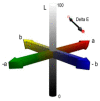Hybrid Chitosan-TiO2 Nanocomposite Impregnated in Type A-2186 Maxillofacial Silicone Subjected to Different Accelerated Aging Conditions: An Evaluation of Color Stability
- PMID: 37630964
- PMCID: PMC10460059
- DOI: 10.3390/nano13162379
Hybrid Chitosan-TiO2 Nanocomposite Impregnated in Type A-2186 Maxillofacial Silicone Subjected to Different Accelerated Aging Conditions: An Evaluation of Color Stability
Abstract
This study explores the impact of the incorporation of a chitosan-TiO2 nanocomposite on the color stability of pigmented room-temperature vulcanization maxillofacial silicone under various accelerated aging conditions. Five hundred disk-shaped specimens were formed with type A-2186 silicone elastomer, and they were distributed into groups based on pigment types and nanoparticle treatments. The color difference (ΔE) was assessed using a colorimeter in the CIELAB color system before and after exposure to aging conditions, including UV-accelerated aging and outdoor weathering. ANOVA, Dennett's T3, and Tukey HSD tests revealed significant color alterations across all silicone types, with the most pronounced being in the red-colored 3% chitosan specimens and the least pronounced being in the 2% TiO2 specimens that underwent UV-accelerated aging. Outdoor weathering consistently increased the ΔE values across all categories. This study suggests that while nanoparticles may offer some resistance against accelerated aging, they fall short in adequately defending against UV radiation during outdoor weathering.
Keywords: accelerated aging conditions; color stability; core–shell method; room-temperature vulcanization (RTV) of maxillofacial silicone; synthesized chitosan–TiO2 nanocomposite.
Conflict of interest statement
The authors declare no conflict of interest.
Figures






Similar articles
-
Evaluation of the Mechanical and Physical Properties of Maxillofacial Silicone Type A-2186 Impregnated with a Hybrid Chitosan-TiO2 Nanocomposite Subjected to Different Accelerated Aging Conditions.Biomimetics (Basel). 2023 Nov 11;8(7):539. doi: 10.3390/biomimetics8070539. Biomimetics (Basel). 2023. PMID: 37999180 Free PMC article.
-
Color stability of nonpigmented and pigmented maxillofacial silicone elastomer exposed to 3 different environments.J Prosthet Dent. 2018 Sep;120(3):476-482. doi: 10.1016/j.prosdent.2017.11.016. Epub 2018 Apr 5. J Prosthet Dent. 2018. PMID: 29627205
-
Effect of Incorporation of Nano-Oxides on Color Stability of Maxillofacial Silicone Elastomer Subjected to Outdoor Weathering.J Prosthodont. 2015 Oct;24(7):569-575. doi: 10.1111/jopr.12252. Epub 2015 Jan 5. J Prosthodont. 2015. PMID: 25557157
-
A Systematic Review on Maxillofacial Prosthesis with Respect to Their Color Stability.J Long Term Eff Med Implants. 2024;34(3):43-53. doi: 10.1615/JLongTermEffMedImplants.2023048802. J Long Term Eff Med Implants. 2024. PMID: 38505893
-
Effect of Aging and Weathering on the Physical Properties of Maxillofacial Silicone Elastomers: A Systematic Review and Meta-Analysis.J Prosthodont. 2019 Jan;28(1):36-48. doi: 10.1111/jopr.12950. Epub 2018 Jul 25. J Prosthodont. 2019. PMID: 30043482
Cited by
-
Evaluation of the Mechanical and Physical Properties of Maxillofacial Silicone Type A-2186 Impregnated with a Hybrid Chitosan-TiO2 Nanocomposite Subjected to Different Accelerated Aging Conditions.Biomimetics (Basel). 2023 Nov 11;8(7):539. doi: 10.3390/biomimetics8070539. Biomimetics (Basel). 2023. PMID: 37999180 Free PMC article.
References
-
- Rangel Goulart D., Sigua-Rodriguez E.A., Alvarez-Pinzón N., Rocha Fernandes A.Ú., Queiroz E. Quality of life of patients with facial prosthesis. Rev. Fac. Odontol. 2017;29:131–147. doi: 10.17533/udea.rfo.v29n1a7. - DOI
-
- Kotra R., Malhotra P., Yadav B., Bhardwaj H., Yadav T. Color in Maxillofacial Prosthetics. Indian J. Health Sci. Care. 2016;3:72–77. doi: 10.5958/2394-2800.2016.00014.6. - DOI
-
- Eleni P.N., Krokida M.K., Polyzois G.L., Bisharat G.I. Color stability of facial silicon prosthetic elastomer after artificial weathering. Dent. Res. J. 2008;5:71–79.
LinkOut - more resources
Full Text Sources

